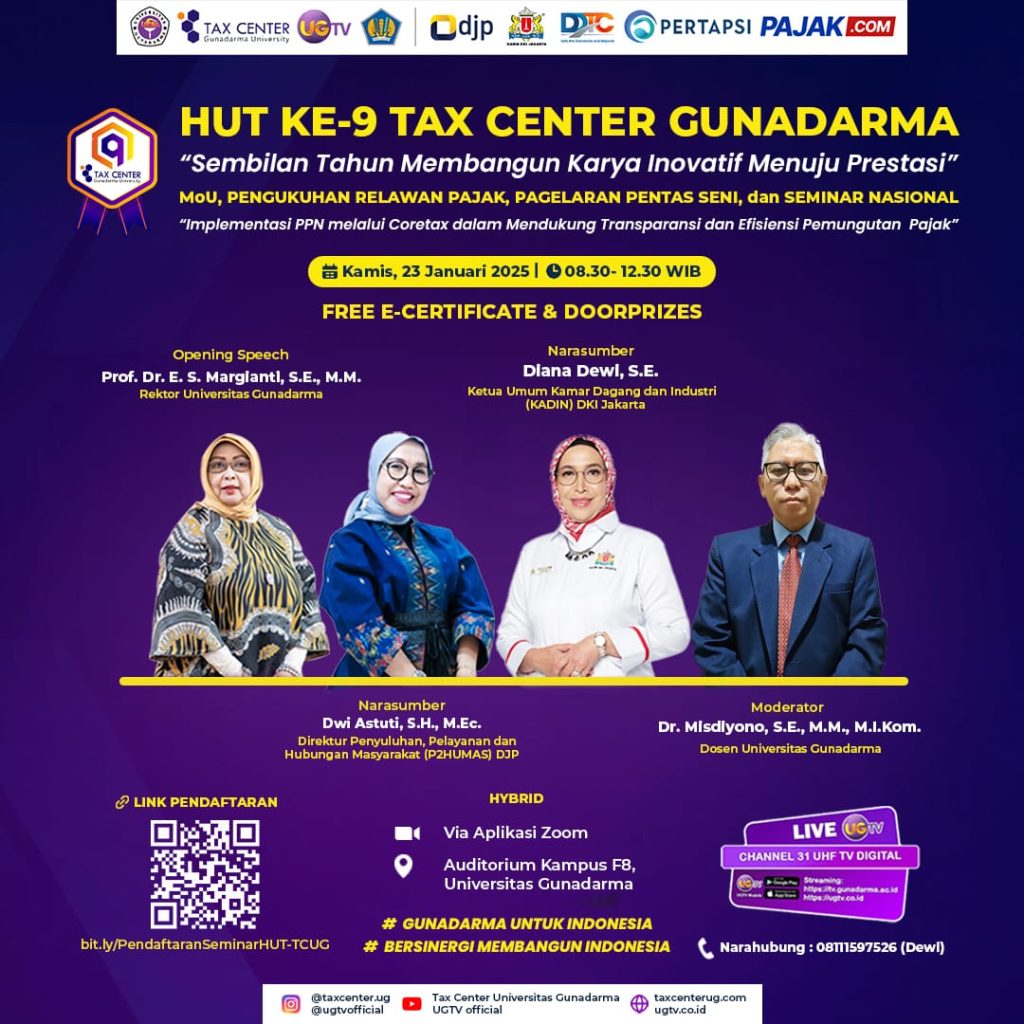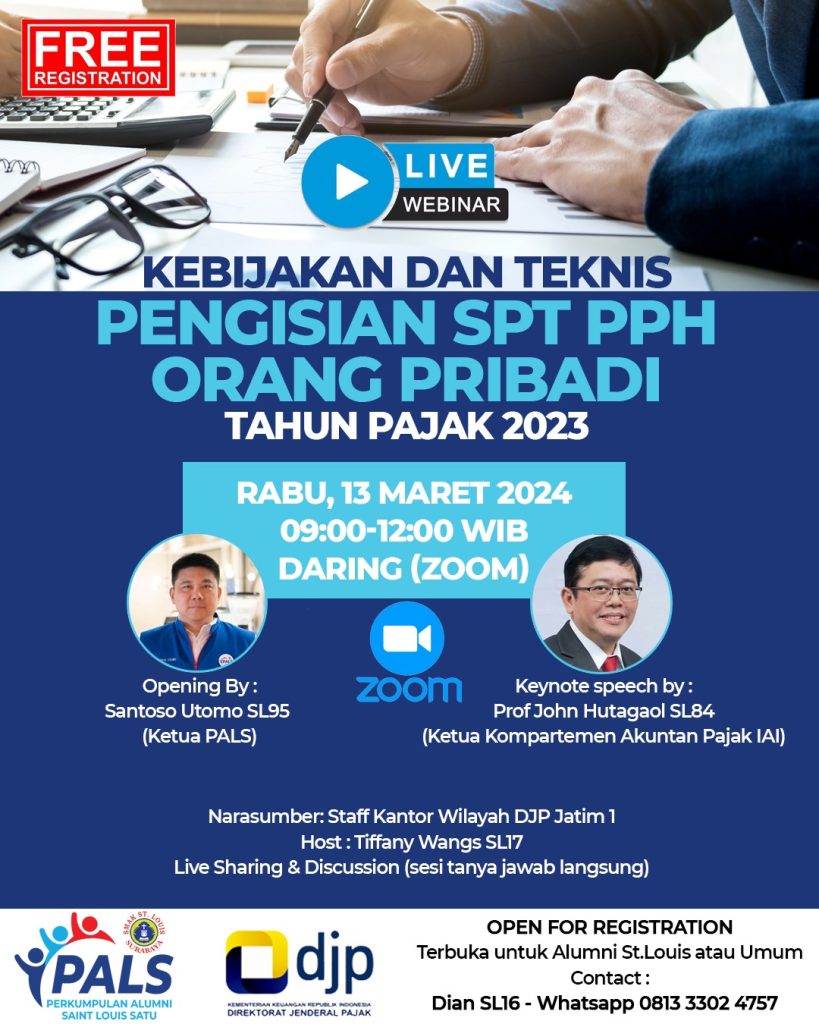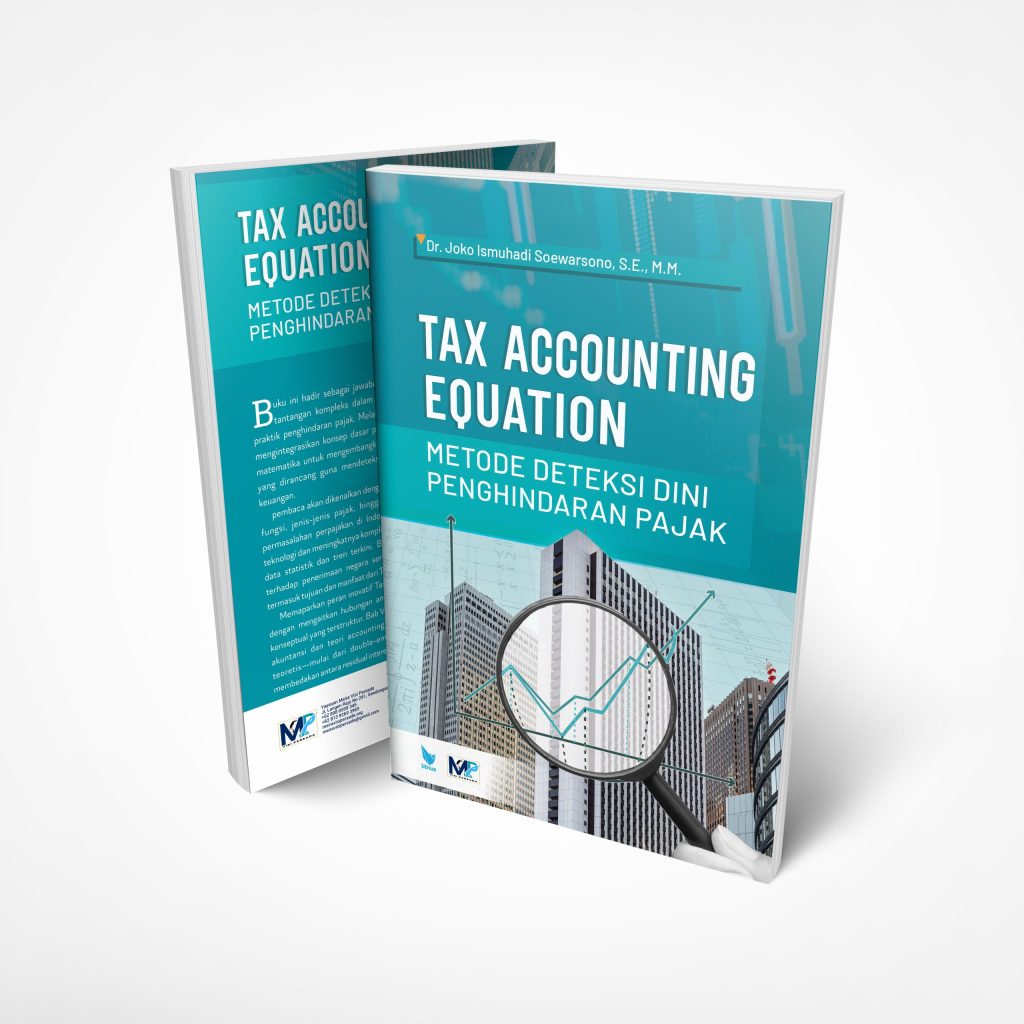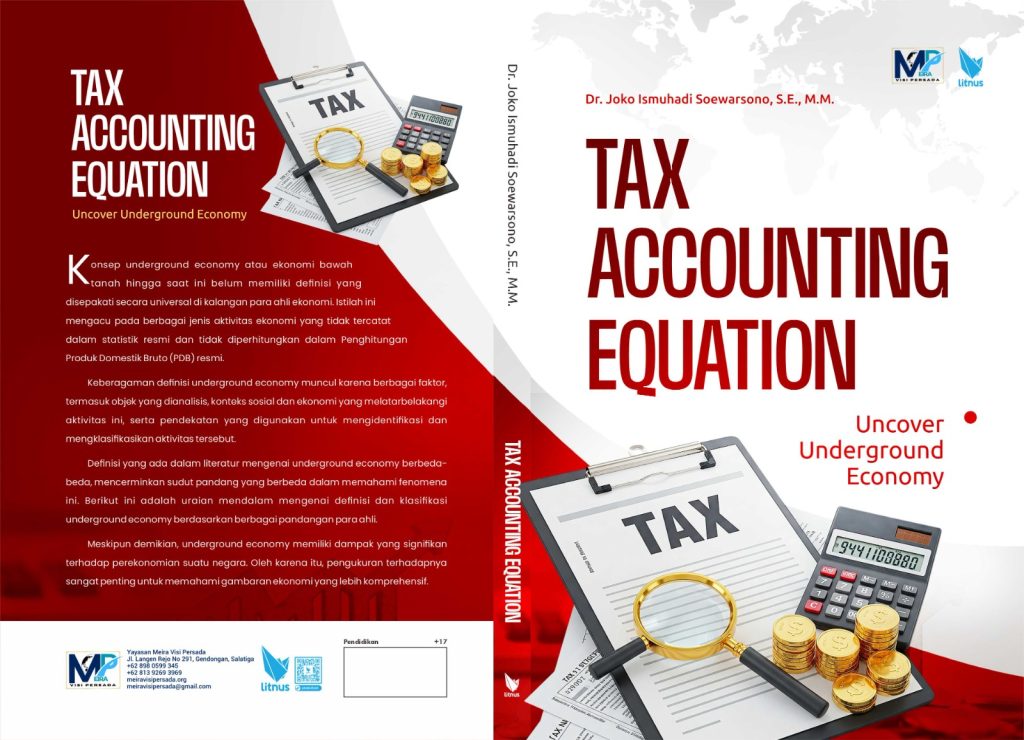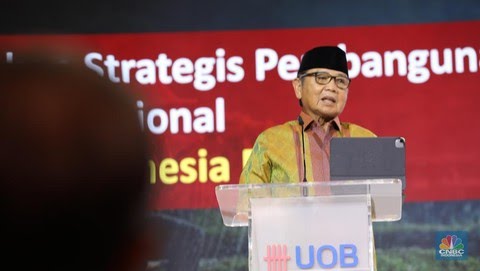
Analyzing Dr. Joko Ismuhadi’s Tax Accounting Equation: Potential for Addressing Indonesia’s Underground Economy
- Ekonomi
Friday, 04 April 2025 01:18 WIB

Jakarta, fiskusnews.com:
1. Executive Summary
The underground economy in Indonesia presents a significant challenge to the Directorate General of Taxes, resulting in substantial revenue losses and hindering fair economic competition. Dr. Joko Ismuhadi’s emerging tax accounting equation offers a potentially valuable tool for analyzing and addressing this issue. This report examines the equation’s potential applications in forensic tax analysis, tax gap identification, enhancing tax compliance, and strengthening tax administration within the Indonesian context. While the specific details of the equation are not explicitly available in the provided materials, its inferred principles, based on the fundamental relationships between assets, liabilities, and income, suggest a structured approach to uncovering hidden economic activity. The report also explores current methodologies in Indonesia, international practices, potential challenges in implementation, and the limited publicly available expert opinions on the equation. Ultimately, while promising, the successful adoption of Dr. Ismuhadi’s tax accounting equation would require further investigation, pilot testing, strategic integration with existing systems, capacity building, and a supportive legal framework.
2. Introduction: The Challenge of Indonesia’s Underground Economy and the Potential of Dr. Joko Ismuhadi’s Tax Accounting Equation
The underground economy, also referred to as the shadow, informal, or black economy, encompasses a wide range of economic activities that are not officially reported to the government. This includes both illegal activities, such as the trade in illicit goods and services, and legal activities that are deliberately concealed to evade taxes, regulations, or administrative burdens. In Indonesia, the underground economy is characterized by various activities, including the smuggling of goods like wood, fuel oil, and protected animals, as well as unregistered operations of street vendors and other informal businesses. This hidden sector represents a significant portion of overall economic activity, making its accurate measurement and effective regulation a persistent challenge for authorities.
Estimates of the size of Indonesia’s underground economy vary depending on the methodology used, but consistently point to a substantial portion of the nation’s Gross Domestic Product (GDP). Studies employing the monetary approach, which analyzes the demand for currency in relation to factors like the tax burden, have indicated that between 2016 and 2019, Indonesia’s underground economy ranged from approximately 17% to 22% of its GDP. Earlier studies using the same approach estimated an average of 8.33% of GDP for the period 2001-2013. Research utilizing tax audit data and the Multiple Indicator and Multiple Cause method estimated the underground economy to be around 20% of GDP between 2000 and 2008. Furthermore, the potential tax losses associated with this hidden economic activity have shown an increasing trend over recent years. This substantial scale of the underground economy underscores the critical need for effective tools to enhance tax revenue collection and ensure economic fairness.
The implications of a large underground economy extend beyond direct tax revenue losses. It hinders the government’s ability to fund essential public services and infrastructure, distorts official economic indicators which are crucial for informed policymaking, and creates unfair competition for legitimate businesses that comply with tax regulations and labor laws. The existence of a significant untaxed sector can also erode social trust and tax morale among compliant taxpayers. Addressing the challenges posed by Indonesia’s underground economy is therefore paramount for sustainable economic development and equitable fiscal policy.
In this context, the emergence of Dr. Joko Ismuhadi’s tax accounting equation presents a potentially valuable development. Dr. Ismuhadi has a background that bridges academic research and practical experience within the Indonesian tax administration . He holds a doctorate from Universitas Borobudur, with his dissertation focusing on “Penanganan Manipulasi Perpajakan oleh Korporasi pada Tindak Pidana Pajak dengan Perbuatan Pencucian Uang” (Handling Tax Manipulation by Corporations in Tax Crime and Money Laundering). He has also published a book on the same topic, “Tindak Pidana Korporasi Analisis Manipulasi Pajak dengan Perbuatan Pencucian Uang” (Corporate Crime Analysis of Tax Manipulation with Money Laundering). News articles from Fiskusnews.com have mentioned his “Tax Accounting Equation” and its potential to analyze the underground economy and address tax loopholes. This body of work suggests Dr. Ismuhadi possesses expertise in areas directly relevant to combating tax evasion and understanding the intricacies of financial crime within the Indonesian economy. His tax accounting equation offers the promise of a structured and analytical approach to uncovering hidden economic activity, potentially empowering the Directorate General of Taxes to enhance revenue collection and ensure fairer tax administration.
3. Deconstructing Dr. Joko Ismuhadi’s Tax Accounting Equation: An Analysis of its Framework and Principles
The provided research materials do not explicitly detail the specific formula or components of Dr. Joko Ismuhadi’s tax accounting equation. While news articles mention its existence and potential applications, the underlying mechanics remain unspecified. Therefore, an analysis of its framework and principles must be inferred based on the available context and general accounting principles.
The user query suggests that Dr. Ismuhadi’s equation likely analyzes the relationships between a taxpayer’s assets, liabilities, and income to identify discrepancies that could indicate undeclared income or other forms of tax evasion. This approach aligns with the fundamental accounting equation, which posits that a company’s total assets are equal to the sum of its liabilities and equity (Assets = Liabilities + Equity). Equity, in its expanded form, encompasses owner’s capital, revenues, expenses, and withdrawals. By examining the balance and relationships between these core accounting elements, the equation could potentially detect anomalies that suggest hidden economic activity. For instance, a significant increase in a taxpayer’s assets without a corresponding increase in reported income or equity could be a red flag.
Dr. Ismuhadi’s equation might be an expanded or modified version of the standard accounting equation, tailored to incorporate tax-specific elements. These could include variables related to reported tax liabilities, deductions, or other tax-relevant financial data. By analyzing how these tax-related elements align with the core components of the accounting equation, the equation might be able to identify inconsistencies that suggest tax evasion. For example, a significant discrepancy between reported income and the level of assets held could indicate underreporting of income for tax purposes.
Furthermore, the mention of analyzing income tax evasion using a mathematical approach considering double-entry bookkeeping principles is likely relevant. Double-entry bookkeeping, the foundation of modern accounting, requires that every financial transaction is recorded with balancing debits and credits, ensuring the accounting equation always remains in balance. Dr. Ismuhadi’s equation could leverage this fundamental principle. Deviations from the expected balance or relationships within a taxpayer’s financial records, as dictated by double-entry bookkeeping, might serve as indicators of unreported income or fraudulent activities aimed at tax evasion. The equation could potentially establish expected financial relationships and then identify taxpayers whose reported data significantly deviates from these norms, warranting further scrutiny.
4. Applications of the Tax Accounting Equation for the Directorate General of Taxes:
Dr. Joko Ismuhadi’s tax accounting equation, based on its inferred principles, holds significant potential for various applications by the Directorate General of Taxes in its efforts to combat the underground economy.
In the realm of forensic tax analysis, the equation could provide a structured framework for scrutinizing taxpayers’ financial data to identify discrepancies that may indicate undeclared income or tax evasion. By analyzing the relationships between reported assets, liabilities, and income, the equation could help detect inconsistencies that suggest the presence of hidden economic activity. For example, if a taxpayer consistently reports a low income but exhibits a high level of asset accumulation, this imbalance, potentially flagged by the equation, could warrant a more in-depth forensic investigation. This aligns with existing forensic accounting techniques used to detect undeclared income, such as net worth analysis, which compares an individual’s assets minus liabilities over time, and the expenditure method, which compares total expenditures with known income sources. Dr. Ismuhadi’s equation could serve as an initial screening tool, identifying cases with significant financial inconsistencies that then require more detailed forensic examination. Forensic accounting is increasingly recognized in Indonesia as a vital tool for uncovering financial discrepancies and fraud, and Dr. Ismuhadi’s equation could be a valuable addition to the forensic toolkit of tax auditors. Furthermore, the equation could potentially aid in identifying suspicious transactions and patterns of behavior that are indicative of tax evasion by analyzing trends in financial data over time.
The equation can also assist in identifying tax gaps by revealing discrepancies in reported financial data. If the equation can effectively pinpoint instances of undeclared income or hidden assets at an individual or sectoral level, aggregating this information could provide a more precise quantification of the overall tax gap attributable to the underground economy. Currently, Indonesia primarily relies on macroeconomic approaches like the monetary method to estimate the tax gap. Dr. Ismuhadi’s equation could offer a complementary, bottom-up approach by analyzing financial data at the entity level. By aggregating the discrepancies identified through the equation across a large number of taxpayers, the Directorate General of Taxes could potentially gain a more granular and detailed understanding of where tax revenues are being lost due to hidden economic activity.
By providing a more accurate picture of economic activity, the equation can help the government develop more effective strategies to enhance tax compliance. The equation’s ability to identify sectors or types of taxpayers with a higher likelihood of financial inconsistencies indicative of underground activity could allow the Directorate General of Taxes to tailor compliance strategies, such as targeted audits, educational campaigns, or outreach programs. Moreover, the equation could be instrumental in identifying high-risk sectors and taxpayers who are more likely to be involved in the underground economy, enabling a more efficient allocation of enforcement resources towards these areas [User Query]. This aligns with current efforts by the Directorate General of Taxes to improve tax compliance through the use of technology and data analysis, as well as simplifying tax regulations and increasing public awareness. Dr. Ismuhadi’s equation could be integrated into the existing technological infrastructure of the tax authority, providing an additional layer of analysis to identify potential non-compliance.
Finally, the tax accounting equation can play a crucial role in strengthening tax administration. It can serve as a valuable tool for tax auditors and investigators by providing a systematic method for identifying suspicious transactions and patterns of behavior that may indicate tax evasion. By establishing expected financial relationships based on accounting principles, the equation can help auditors quickly pinpoint areas in a taxpayer’s financial records that deviate significantly from these norms, thus highlighting potential issues for further investigation. Furthermore, by analyzing financial data at an aggregate level, the widespread application of the equation could enable the tax office to gain a better understanding of the overall flow of money within the economy and identify sectors where underground activity is concentrated. This aligns with the broader role of forensic accounting in tax investigations, which involves applying specialized skills to uncover financial irregularities. Dr. Ismuhadi’s tax accounting equation could be a significant addition to the forensic accounting toolkit of the Directorate General of Taxes.
5. Current Methodologies in Indonesia for Combating the Underground Economy:
The Directorate General of Taxes in Indonesia currently employs a range of methodologies to combat the underground economy, including forensic tax analysis techniques and approaches to estimate and address the tax gap.
In terms of forensic tax analysis, Indonesian tax authorities are increasingly leveraging digital forensics and data analysis. Digital forensics involves the use of specialized hardware and software to process and analyze electronic data, which can be crucial in detecting tax fraud practices such as evasion and avoidance. This includes uncovering hidden asset accounts, tracing taxpayer money flows, and identifying patterns of fraud in tax reporting and payment. The Directorate General of Taxes has been implementing digital forensic activities in accordance with applicable Standard Operating Procedures. Additionally, traditional tax audits and investigations remain fundamental tools for identifying discrepancies and potential tax evasion related to the underground economy. These audits involve a detailed examination of a taxpayer’s financial records to ensure compliance with tax laws.
Regarding the tax gap, the Directorate General of Taxes, like tax authorities in many other countries, seeks to quantify the difference between the amount of tax that should be collected and the amount that is actually collected. The monetary approach, specifically the currency demand model, is a commonly used method in Indonesia to estimate the size of the underground economy and the associated potential tax loss. This method analyzes the relationship between the demand for currency and factors such as the tax burden, assuming that individuals involved in the underground economy prefer to use cash to avoid government scrutiny. The Indonesian government is also actively studying the underground economy and implementing strategies to address it, aiming to increase state revenue. These efforts include mapping and addressing practices like inaccurate reporting and transfer pricing that could harm the country’s finances. Furthermore, the government utilizes fiscal incentives and public awareness campaigns as broader strategies to improve tax compliance.
6. International Benchmarking: Accounting-Based Methods for Analyzing Underground Economies in Other Countries
Several countries internationally employ accounting-based methods to analyze and address their underground economies, although a specific “tax accounting equation” named as such might not be universally adopted.
One common approach involves analyzing discrepancies in national income and expenditure data. This method is based on the principle that, in theory, the income measure of a nation’s Gross National Product (GNP) should equal its expenditure measure. A significant gap between these two measures can indicate the presence of unreported economic activity that is captured in expenditure but not in reported income. While this is a macroeconomic approach, it relies on fundamental accounting principles of national accounts.
Another widely used method is the currency demand approach, which often incorporates tax rate variables. This approach, pioneered by Vito Tanzi and others, analyzes the relationship between the amount of currency in circulation and factors such as the level of taxation, interest rates, and income. The underlying assumption is that an increase in the tax burden, for example, will lead to an increased demand for cash as individuals and businesses seek to hide transactions from tax authorities. By econometrically modeling the demand for currency, researchers can estimate the amount of “excess” currency in circulation, which is then attributed to the underground economy. This method, while macroeconomic, is fundamentally linked to the accounting of monetary flows.
While specific examples of other countries using a formal “tax accounting equation” similar to Dr. Ismuhadi’s are not explicitly detailed in the provided snippets, the fundamental principles of accounting equations and balance sheet analysis are universally applied in financial scrutiny. Tax authorities in various jurisdictions likely utilize these principles, perhaps in less formalized ways, to identify inconsistencies and anomalies in reported financial data that could be indicative of tax evasion or hidden economic activity. For instance, analyzing a taxpayer’s balance sheet to see if their reported assets are consistent with their reported income is a common practice in tax audits worldwide.
7. Analyze Potential Challenges and Limitations that Might Be Associated with Implementing Dr. Joko Ismuhadi’s Tax Accounting Equation in the Indonesian Context
Implementing Dr. Joko Ismuhadi’s tax accounting equation in Indonesia on a large scale could present several challenges and limitations.
A primary challenge is the inherent difficulty in obtaining accurate and complete financial data, particularly from entities operating within the underground economy. By its very nature, the underground economy involves activities that are deliberately concealed from official reporting. Individuals and businesses engaged in this sector often do not maintain formal accounting records or may provide incomplete or falsified information to tax authorities. This lack of reliable data could significantly hinder the effective application of Dr. Ismuhadi’s equation, which likely relies on analyzing financial statement components.
Furthermore, there is the potential for individuals and businesses to manipulate financial records to avoid detection, even when a sophisticated equation is employed. Tax evasion often involves deliberate efforts to underreport income, overstate expenses, or conceal assets. Those operating in the underground economy may be adept at these practices, potentially making it difficult for even a well-designed accounting equation to identify their illicit activities. The equation’s effectiveness will depend on its ability to detect subtle forms of financial manipulation.
Indonesia’s economic landscape is characterized by a large informal sector. Businesses and individuals in this sector often operate outside formal accounting systems, relying on cash transactions and lacking comprehensive financial records. Applying a standard accounting equation might be challenging or even impossible for this significant segment of the economy. Adapting the equation to account for the specific characteristics of the informal sector, if feasible, would be crucial.
Implementing Dr. Ismuhadi’s tax accounting equation on a large scale would also likely require significant resource investment. This includes training tax auditors and investigators on the principles and application of the equation, potentially developing or acquiring the necessary software and IT infrastructure for analysis, and ensuring sufficient technical expertise within the Directorate General of Taxes. The current limitations in digital forensic expertise within the tax authority suggest that capacity building would be essential.
Finally, the legal and regulatory framework would need to clearly support the use of Dr. Ismuhadi’s tax accounting equation in tax administration and enforcement. Regulations would need to define how the equation should be applied, how its results should be interpreted as potential evidence of tax evasion, and what legal recourse is available based on its findings. Without a clear legal framework, the equation’s utility in tax audits and legal proceedings might be limited.
8. Look for Expert Opinions or Critiques on the Effectiveness and Practicality of Using Such an Equation for Large-Scale Tax Administration
The provided research snippets do not contain any publicly available expert opinions or academic critiques specifically focused on Dr. Joko Ismuhadi’s tax accounting equation. This absence suggests that either such opinions are not readily accessible in the public domain or that the equation is a relatively new concept that has not yet been extensively reviewed by the academic or expert community.
However, there are broader expert opinions on the use of accounting-based methods for detecting tax evasion and analyzing the underground economy. Some experts favor macroeconomic approaches like the monetary method for estimating the overall size of the shadow economy, while acknowledging their limitations and underlying assumptions. Others emphasize the potential of forensic accounting techniques in uncovering tax evasion at a micro-level by scrutinizing financial records and identifying anomalies. The effectiveness of any method is often seen as contingent upon the availability of reliable data and the level of sophistication employed by those seeking to evade taxes.
Regarding the practicality of implementing complex analytical tools for large-scale tax administration, experts generally agree that it requires significant resources, including skilled personnel and robust technological infrastructure. The success of such tools also depends on the quality of the data being analyzed and the ability of tax authorities to adapt to the evolving tactics of tax evaders. The scalability, ease of use, and integration capabilities of any new analytical tool, such as Dr. Ismuhadi’s equation, would be crucial factors in its practical application for large-scale tax administration.
9. Conclusion: The Role of Dr. Joko Ismuhadi’s Tax Accounting Equation in Enhancing Tax Administration in Indonesia
Dr. Joko Ismuhadi’s tax accounting equation presents a promising avenue for the Directorate General of Taxes to enhance its efforts in analyzing and addressing the challenges posed by Indonesia’s underground economy. Its potential to provide a structured framework for forensic tax analysis, identify tax gaps, enhance tax compliance, and strengthen tax administration aligns with the critical need for more effective tools in this area. The equation’s inferred principles, based on the fundamental relationships within accounting data, suggest a systematic approach to uncovering hidden economic activity that could complement existing methodologies.
However, the successful implementation of the equation is not without its challenges. The inherent difficulties in obtaining accurate financial data from the often concealed operations of the underground economy, the potential for sophisticated manipulation of financial records, and the significant presence of the informal sector in Indonesia pose considerable limitations. Furthermore, the large-scale adoption of such an analytical tool would require substantial investment in resources, including training, technology, and legal framework development.
Overall, while the specific details and effectiveness of Dr. Ismuhadi’s tax accounting equation require further investigation and validation, its underlying concept offers a potentially valuable addition to Indonesia’s arsenal against the underground economy. By providing a structured, accounting-based approach, it could empower the Directorate General of Taxes to better identify and address tax evasion, ultimately contributing to enhanced revenue collection and a fairer tax system.
10. Recommendations for the Directorate General of Taxes
Based on the analysis, the following recommendations are proposed for the Directorate General of Taxes:
- Further Investigation into the Equation: The Directorate General of Taxes should directly engage with Dr. Joko Ismuhadi to obtain a comprehensive understanding of his tax accounting equation, including its specific methodology, formula, components, and any empirical evidence supporting its effectiveness.
- Pilot Program Implementation: A pilot program should be initiated to test the practicality and effectiveness of Dr. Ismuhadi’s tax accounting equation on a limited scale within the Directorate General of Taxes. This pilot should involve a select group of tax auditors and investigators applying the equation to a defined segment of taxpayers.
- Data Integration Strategy: A clear strategy should be developed for integrating Dr. Ismuhadi’s tax accounting equation with the existing data systems and forensic analysis tools currently used by the Directorate General of Taxes. Ensuring data quality and accessibility will be crucial for the successful application of the equation.
- Capacity Building and Training: Invest in comprehensive training programs for tax auditors and investigators on the principles, application, and interpretation of the results of Dr. Ismuhadi’s tax accounting equation. This will ensure that personnel have the necessary skills to utilize the equation effectively.
- Legal and Regulatory Review: Conduct a thorough review of the existing legal and regulatory framework to determine any necessary amendments or additions required to support the use of Dr. Ismuhadi’s tax accounting equation in tax administration and enforcement.
- Collaboration with Experts: Seek expert opinions from tax law specialists, forensic accountants, and economists, both within Indonesia and internationally, to further evaluate the potential benefits and limitations of Dr. Ismuhadi’s equation and to gather insights on best practices for its implementation.
- Comparative Analysis: Conduct a more in-depth comparative analysis of accounting-based methods used in other countries for analyzing underground economies to identify best practices and potential adaptations that could be relevant for the Indonesian context and the application of Dr. Ismuhadi’s equation.
Table 1: Estimates of Indonesia’s Underground Economy (Section 2)
| Year(s) | Estimated Size (Trillion IDR) | Estimated Size (% of GDP) | Methodology Used | Source |
| 2016-2019 | 475.6 – 750.8 (per quarter) | 17.65 (average per quarter) | Monetary Approach | |
| 2001-2013 | 11.17 (average potential loss) | 1.0 (average potential loss) | Monetary Approach | |
| 2000-2008 | N/A | 20 (average) | Tax Audit & MIMIC | |
| 2011-2015 | 536 (average per year) | 22.1 (average per year) | Currency Demand Model (OLS) |
Table 2: Forensic Accounting Techniques for Detecting Undeclared Income (Section 4)
| Technique | Description | Potential Application of Dr. Ismuhadi’s Equation |
| Net Worth Method | Compares an individual’s assets minus liabilities over time; unexplained increases suggest hidden income. | Dr. Ismuhadi’s equation could identify discrepancies in the asset-equity relationship that might prompt a net worth analysis to investigate the source of asset accumulation. |
| Expenditure Method | Compares total cash expenditures with total known income sources; significant discrepancies indicate potential unreported income. | If Dr. Ismuhadi’s equation reveals a low reported income relative to asset holdings, it could suggest the need for an expenditure analysis to see if spending patterns align with the declared income. |
| Bank Deposit Analysis | Scrutinizes bank deposits and transfers to identify unusual patterns or sources of funds. | The equation might flag inconsistencies in the income-asset relationship, leading to a detailed analysis of bank deposits to trace the origin of funds contributing to asset growth. |
| Lifestyle Analysis | Examines an individual’s spending habits and lifestyle to see if they are consistent with their reported income. | Significant imbalances identified by Dr. Ismuhadi’s equation (e.g., low income, high assets) could trigger a lifestyle analysis to determine if the taxpayer’s living standards are supported by their declared income, potentially revealing undeclared sources. |
Table 3: International Examples of Accounting-Based Methods for Underground Economy Analysis (Section 6)
| Country/Region | Method Used | Brief Description | Source |
| Various | Income-Expenditure Discrepancy | Compares national income statistics with national expenditure statistics; a significant gap suggests a large underground economy. | |
| Various | Currency Demand Approach with Tax Variables | Analyzes the relationship between the amount of currency in circulation and factors like tax rates, assuming higher taxes lead to more cash use in the underground economy. | |
| Global | Balance Sheet Analysis | Fundamental accounting principle used to assess the financial health of entities; can be adapted to identify inconsistencies indicative of tax evasion. | (Inferred Principle) |
Reporter: Marshanda Gita – Pertapsi Muda
Share
Berita Lainnya
Pertapsi : Sudahkan Anda Menguasai Core Tax?
An Integrated STEM and Tax Accounting Equation Framework for Investigating Underground Economy Activity
OPINI: Transfer Pricing dan Aspek Perpajakannya
Akun Utang Petunjuk Jalan Gelap Menuju Underground Economy Activity?
Ajak Mengamati Perkembangan Teknologi Dengan Nonton Da Vinci – Penggunaan AI di Vidio
STIE IGI mempersembahkan seminar OFFLINE yang wajib kamu ikuti:”FROM CAMPUS TO CAREER: PUBLIC SPEAKING FOR SUCCESS”
Pengurus Akuntan Perpajakan IAI Jabar 2023-2027: Siap Berkontribusi Untuk Negeri
Rekomendasi untuk Anda

Berita Terbaru
Eksplor lebih dalam berita dan program khas fiskusnews.com
Tag Terpopuler
# #TAE
# #TAX ACCOUNTING EQUATION
# #TAX FRAUD
# #TAX EVASION

